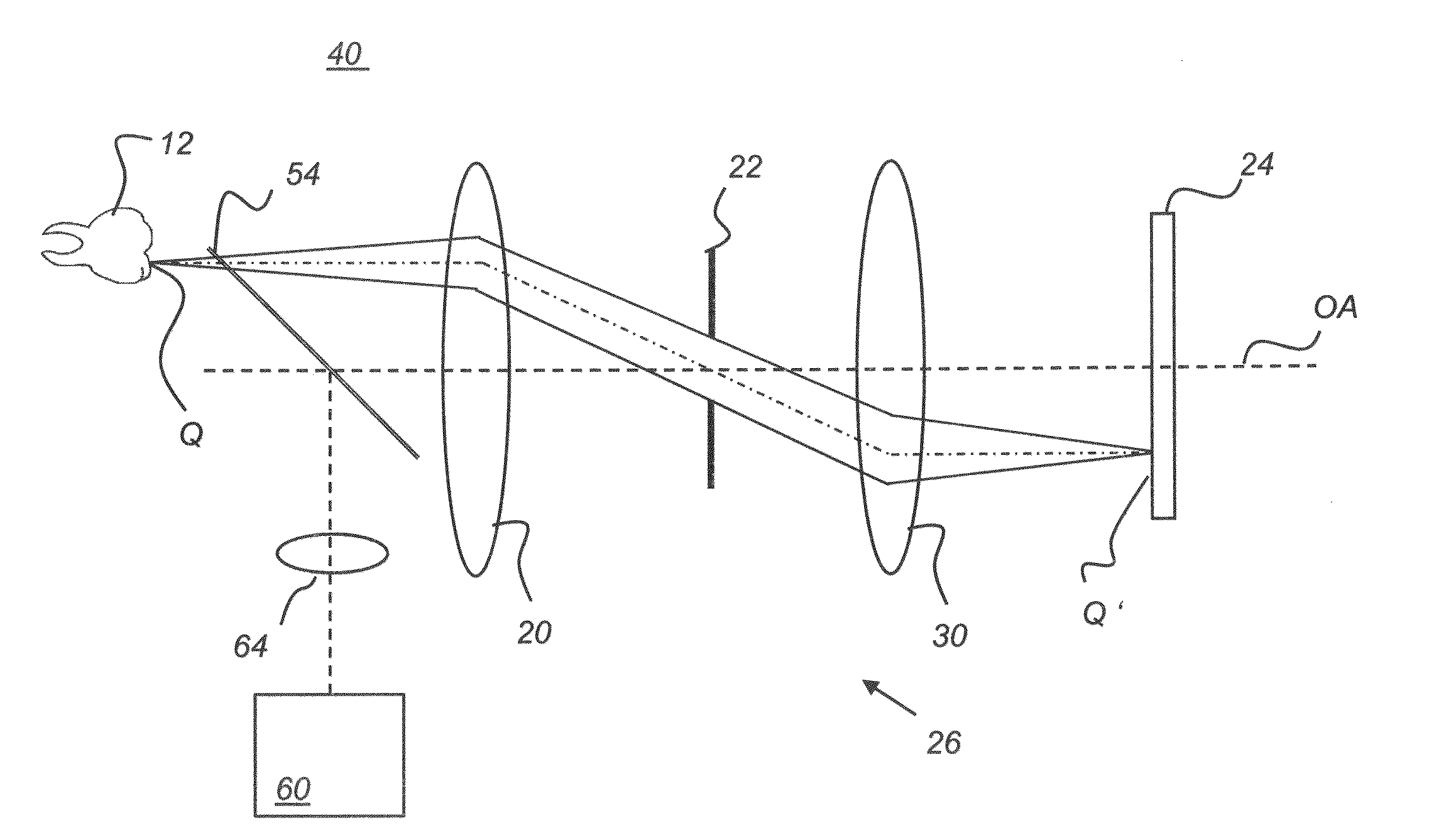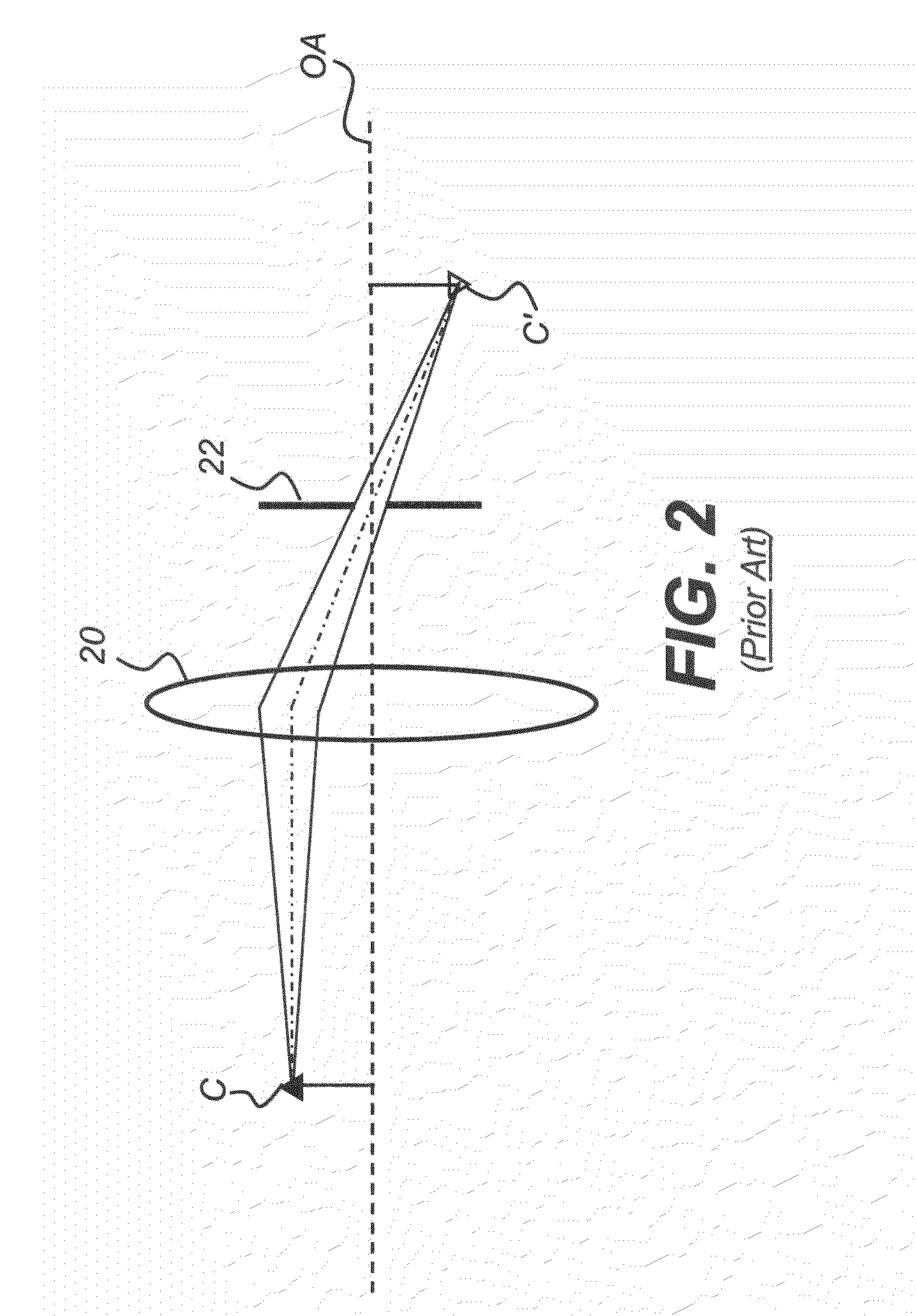3-d imaging using telecentric defocus
a technology of telecentric defocus and 3d imaging, applied in the field of diagnostic imaging, can solve the problems of limiting the usability, accuracy, cost-effectiveness, and high reflection level, and achieve the effect of convenient display
- Summary
- Abstract
- Description
- Claims
- Application Information
AI Technical Summary
Benefits of technology
Problems solved by technology
Method used
Image
Examples
Embodiment Construction
[0030]The following is a detailed description of the preferred embodiments of the invention, reference being made to the drawings in which the same reference numerals identify the same elements of structure in each of the several figures.
[0031]The apparatus and methods of the present invention obtain 3-D depth information from images by using telecentric defocus. In order to more fully understand the principles and operation of the present invention, it is instructive to review telecentricity in general and, more specifically, to describe the operation of the double telecentric optics of the apparatus of the present invention.
[0032]The schematic diagram of FIG. 1 shows how a lens 10 forms an image in a conventional, non-telecentric imaging system. In the object space to the left of lens 10, objects A, B, and C are all the same height. In image space, however, images A′, B′, and C′ are of different heights. Following this conventional model, the further the object is from the lens, t...
PUM
 Login to View More
Login to View More Abstract
Description
Claims
Application Information
 Login to View More
Login to View More - R&D
- Intellectual Property
- Life Sciences
- Materials
- Tech Scout
- Unparalleled Data Quality
- Higher Quality Content
- 60% Fewer Hallucinations
Browse by: Latest US Patents, China's latest patents, Technical Efficacy Thesaurus, Application Domain, Technology Topic, Popular Technical Reports.
© 2025 PatSnap. All rights reserved.Legal|Privacy policy|Modern Slavery Act Transparency Statement|Sitemap|About US| Contact US: help@patsnap.com



